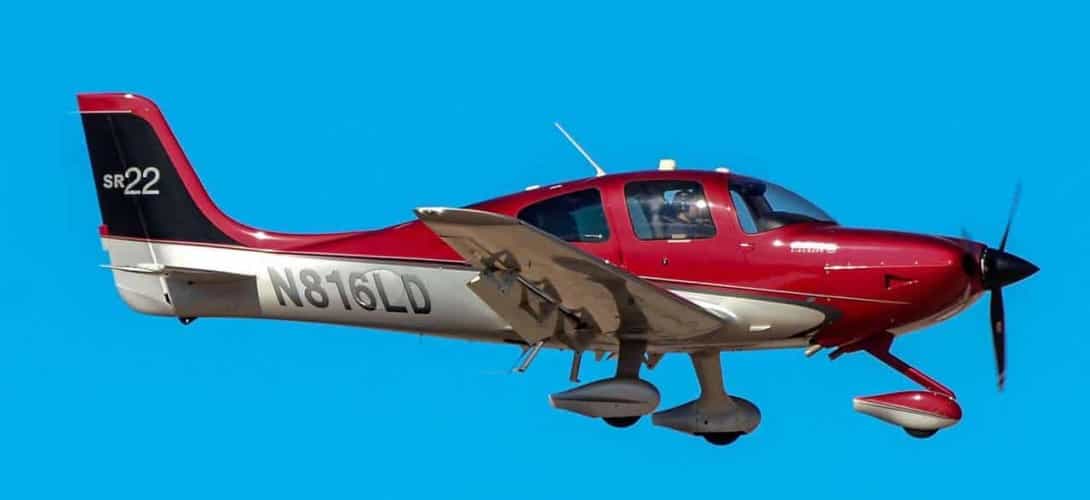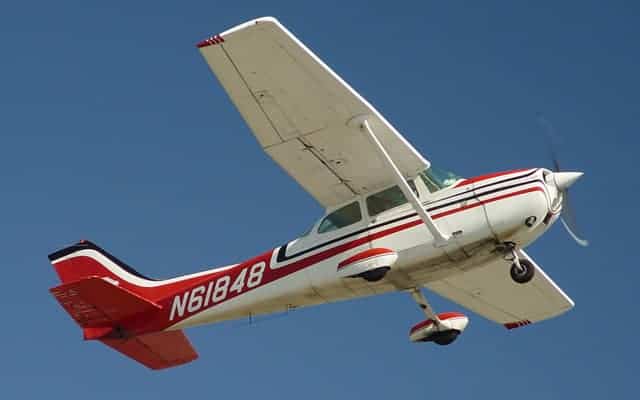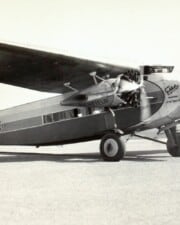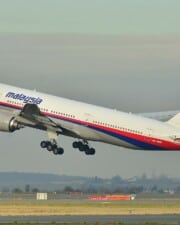All planes are not created equal, and it is no secret that a Cessna 152 is easier to fly than a Typhoon. But what exactly makes it easy and how does it rank among the ‘easiest’ airplanes to fly? Read on to read the top 6.
Table of Contents
Although some might dream of getting their hands on the most complicated plane on the airfield, the majority of pilots prefer an easy day in the sky.
But with so many different planes filling hangars across the world, determining the easiest to fly is no simple task. So to compile our list we have rated contenders that are the most ‘beginner-friendly’ and are renowned for their simplicity, stability and handling characteristics.
Due to these characteristics the majority of the easiest planes to fly are popular with training organisations.
6. J-3 Piper Cub

The oldest aircraft on this list, the Piper Cub was first produced in 1938 and was one of the earliest aircraft designed primarily for training purposes. Although nearly 80 years old, this iconic plane is still flown today and is about as simple as it gets.
If you are in average good health and are capable of exercising normal judgement, you can solo a piper cub with as little as 8 hours flying instruction!
How to Fly a Piper Cub
The plane is so simple and has such gentle handling characteristics that pilots get to experience aviation in its purest form, without the added distractions that come with excess avionics. One instructor called it:
An engine followed by just enough airplane that the student can learn how air feels and how an airplane reacts in going through it.
The taildragger design of the cub however, can present challenges for those used to flying on a tricycle gear. Such a design considerably limits the pilot’s view of the area straight ahead, especially during landing, so pilots must conduct a series of s-turns whilst taxiing to ensure there is no traffic ahead.
Tailwheels also require a different landing technique and are less forgiving when it comes to cross-wind landings. So it’s best not to be flown on windy days!
5. Diamond DA40 Star
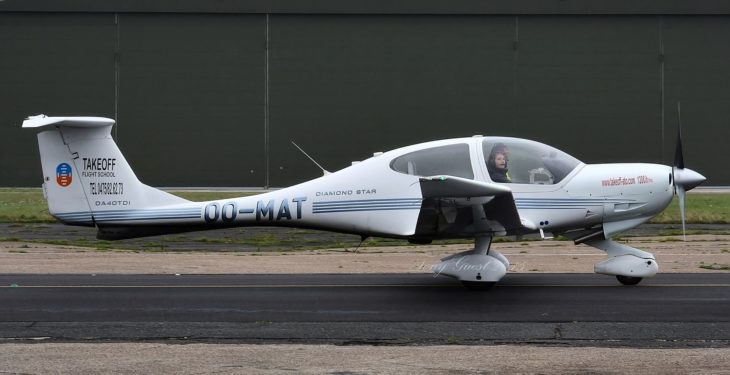
Out of all the airplanes on this list, the DA40 Star is one of the most fun to fly. With excellent visibility from its bubble canopy, the Da40 is a favorite among the general aviation world.
Reportedly light and easy to control, the DA40 is essentially a powered glider and apparently, if the engine did fail, its rate of descent would be lower than the SR22 with the parachute out!
That being said, DA40’s safety record far surpasses Cirrus’ and statistically has only 1 fatal accident per 1000 airplane years. The plane is very difficult to stall, and easy to recover from.
Like many airplanes on this list, most variants of the DA40 are fitted with the Garmin G1000 and an autopilot system, which are incredibly useful for both student and instructor pilots to reduce workload and increase capacity.
Landing a Star isn’t particularly difficult, but there is a knack to it. The renowned visibility actually becomes a hindrance in this respect and the unusual ‘over the nose’ picture can cause many pilots to commence the landing flare too high. It also has a tendency to be floaty if the flare is commenced above 65 knots; slower is better for this particular steed.
4. Cessna 152
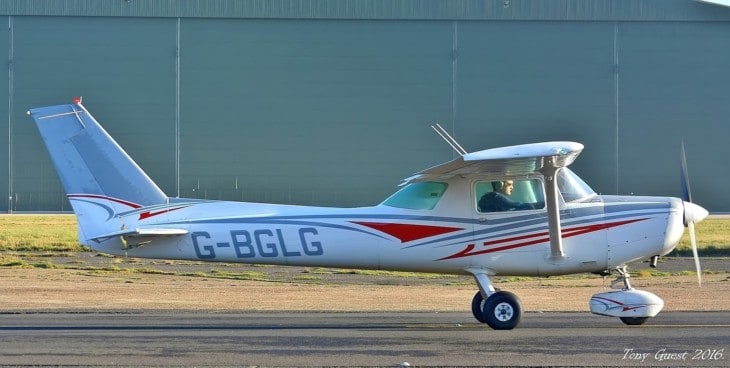
The C152 has trained pilots for decades, and years after its production has ceased, it continues to be a popular choice for pilots looking for an unchallenging vehicle. Lighter and less stable than its successor the 172, its flaws act as valuable learning points for student pilots still getting used to the feel of flying.
This model is considered by many to be today’s Piper Cub. Its simple cockpit layout and high wing position provides many advantages. Not only does it give the pilot a great view below, but it also facilitates a gravity fed fuel system which reduces the pilots workload even further.
As a 2-seater, the cockpit is rather cramped, but the main drawback of the C152 is the sensitive weight and balance. If your passenger bends down to reach something from the footwell, you may well find yourself entering a gentle descent.
But such quirks are all part of the fun when flying a little plane of this type.
3. Piper Pa28
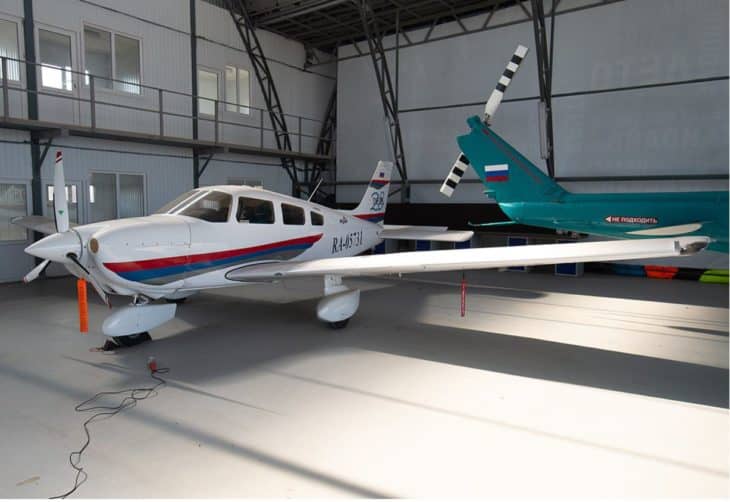
The Piper Pa 28 series includes famous names such as the Warrior, Cherokee, Arrow and Archer. Whilst they may differ very slightly from each other due to engine size etc, they all share the same reputation as a reliable training airplane.
Famously forgiving of errors, both on the ground and whilst airborne, the PA28 is much less twitchy in the air than other training aircraft. With less sensitive controls, it’s much easier for the pilot to maintain an altitude without the need for constant elevator trimming.
But the PA28’s landing performance is what makes this plane among the easiest to fly. Less prone to ballooning than its competitors, the PA28 is so stable that it will practically land itself.
What’s more, when the pilot inevitably does a hard landing (they happen to us all!) the suspension cushions the blow; a saving grace for instructors who have to teach 6 students how to land that day!
2. Cirrus SR22
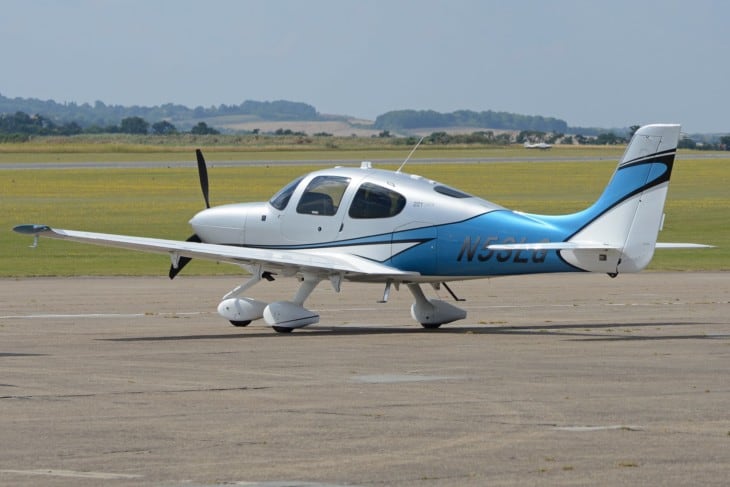
In terms of safety the Cirrus SR22 is in a class of its own. Boasting unique features such as airbag seatbelts and an inbuilt parachute, this plane really stands out from the crowd.
Starting production in 2001, the SR22 is the newest plane on this list. As a result, it has many modern instruments fitted as standard and appeals to a much more tech-savvy generation of pilots.
Fitted with the G1000 and a qwerty keyboard, all the clutter usually seen on a plane’s dashboard has been removed, so you can focus on what’s outside. Power control is just as straight-forward, with only one lever to govern both the propeller RPM and throttle.

Such a simplistic design makes the SR22 a little less daunting for beginners. Its benefits do not stop there however. With its high-spec avionics, the owner can check the status of the plane remotely via an app and can even upload flight plans from their phone via Bluetooth!
The SR22 also incorporates flight envelope protection (a safety feature that prevents the pilot from putting the aircraft into an undesirable aircraft state, such as a stall or spin), but even without this it is nearly impossible to spin and has a very stable design. This stability is partly due to its large wings, which gives it excellent landing characteristics and allows the pilot to really finesse their landing technique.
Whilst the luxurious SR22s can be as high-tech as the buyer would like, this does have its disadvantages. Pilots not familiar with the G1000 and the simplified controls may find these new tech features difficult to adjust to.
The unusual choice of a sidestick, instead of the more common ‘stick’ or yoke between the pilot’s legs, is also the subject of much controversy. Many pilots find a sidestick much more awkward to use and can make the transition from the left seat to the right, much more difficult.
1. Cessna 172 Skyhawk
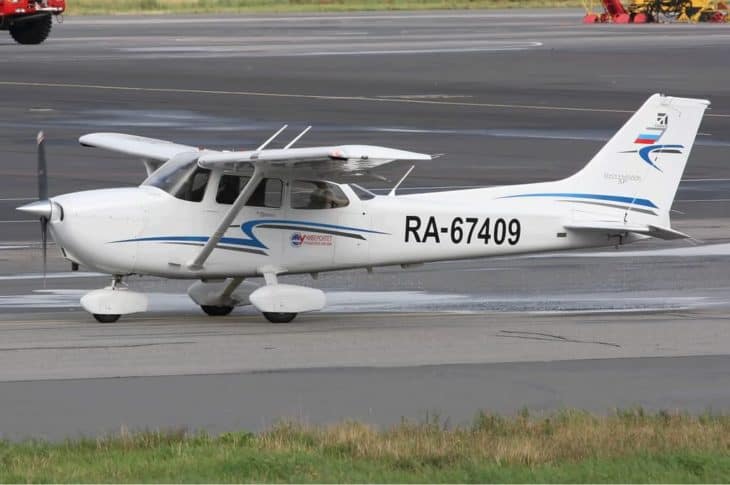
The Cessna 172 is the best selling aircraft of all time, and according to a survey taken by flight schools around the world, it has also been voted the easiest to fly. Although originally designed as a ‘personal plane’ it has rapidly gained popularity over the years as a trainer.
The C172 is essentially a heavier, 4-seater version of the hugely successful C152. Although production began in 1956, recent additions such as the Garmin G1000 have kept this plane user-friendly, capable and relevant over the years.
According to many pilots, the C172 is faster and more stable than its predecessor, making it more suited to cross-country flying. If its position in the air is disturbed by turbulence or an accidental touch of the controls, it has a strong tendency to return to its original position.
Such a large margin for error is what makes this plane so popular, but its benefit as a trainer also comes from its stall characteristics. The C172 has a much more pronounced stall than other planes on this list, so the student can actually feel it and react accordingly.
References ▾
- Flying Mag
- Fly a Cub
- Five Airplanes Every Pilot Should Fly
- FAA
- The top 5 training aircraft
- In flight pilot training
- Diamond Aircraft
- Airbum
- AOPA - Cessna 152
- The 4 easiest planes to learn to fly in
- Cranfield Flying School - Our Fleet
- Wikipedia Sr22
- The Next Generation of Pilots
- AOPA - Cirrus SR22
- Cirrus - SR22
- Five easiest planes to learn to fly in
Related Posts
